The Rise And Fall Of The Almighty Brushstroke
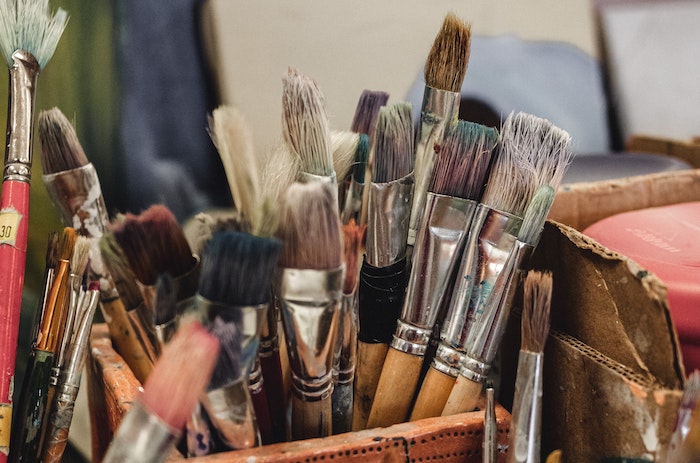
Robert Henri, in his classic The Art Spirit, actually dedicates several pages to the brushstroke and the feelings they evoke. Here is just a small sample of his descriptions: “There are timid, halting brush strokes…other strokes which inspire a sense of vigor, direction, speed, fullness and all the varying sensations an artist may wish to express. The mere brushstroke itself must speak….It is showy, shallow, mean, meager, selfish, has the skimp of a miser; is rich, full, generous, alive and knows what is going on.” Henri continues: brushstrokes can be bold, bad, attenuated, weeping, rich, fluent, abundant; there are strokes which mount, carry up, rise, strokes which end too soon, dull strokes and confused strokes, strokes that carry a message, a bigness of spirit, and so on.
As you might well imagine, then, in order for a painter to be able to have his or her brushstroke “speak,” as it were, not only must the painter have something to say (ie, feel) but he or she must have the kind of control over the brush as might a pianist have control over the keys or a violinist over the bow. This requires, in turn, that the brush be held properly so that the flexibility of one’s shoulder and elbow and wrist and fingers all come into play. You can imagine, then, my disappointment when I tuned into a BCC program on the Impressionists and at the very beginning, as inviting music played in the background, an actor could be seen painting what was supposed to be the Japanese Footbridge at Giverny. The painting that the actor was working on was the typical fake-y Impressionist style that gives Impressionism such a bad name today. There were lots of stupid, boring, repetitive dabs (paraphrasing Henri, sort of). And the color was equally as phony, lacking entirely any atmospheric harmony. Who’s to know, right? (Least of all the experts behind the production.) But the part that nearly made me want to puke was the way the actor was holding the brush. It reminded me of my chagrin as a youth when actors cast as major league baseball stars couldn’t convincingly throw a ball. I mean, how inspiring is that?
After all, if a great painter is suppose to evoke rich and full and generous and alive strokes, you would think he or she would know how to hold a brush. Okay, see for yourself. Here it is:
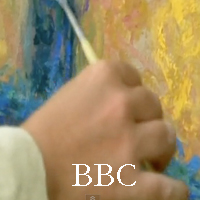
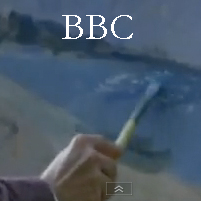
Does this bug you? Actually, the whole reason for posting this is that I suspect it may not bug you one bit, so let me explain.
The BBC actor is holding the brush the way one might hold a hammer, with all his fingers wrapped around the handle. Yes, to be sure, in the image on the left, the baby finger is held out in a delicate manner and in the image on the right, the forefinger is extended a bit, suggesting finesse but in this type of “pawing,” or “clawing,” or “tapping” or “smearing,” there is limited ability to use one’s wrist. It is as though the wrist had been amputated.
Let me show you the way real painters hold the brush:
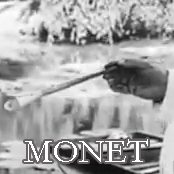
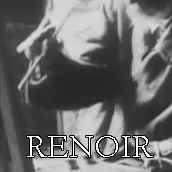
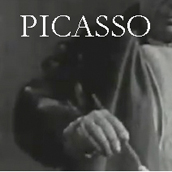
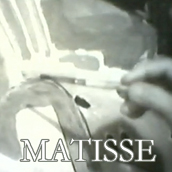
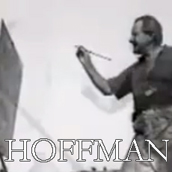
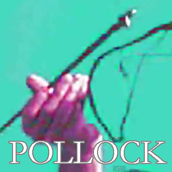
Do you see the difference? The brush rests on one’s middle finger and is held in place by the forefinger and the thumb. Even Renoir, who suffered from severe rheumatoid arthritis when this photo was taken, holds the brush properly. It is not unlike how one might hold a pen or pencil. Or to make the point about limited wrist action, try holding a brush like a hammer (ie, like the BBC guy) and then try to sign your name. Can you get that flare or movement into your signature or does it feel like signing with a brick?
There are a number of reasons why the knowledge of how to properly hold a brush is little emphasized and, practically speaking, gone with the wind. Among them, at least as far as the important art career is concerned, are the complete eclipse of easel painting and the teaching of art by masters within the studio. Suffice it to say that practices begun within Abstract Expressionism and developed within Pop Art again made the brushstroke taboo (to the degree that painting exists at all) if not totally irrelevant. Count de Nieuwekerke would be pleased.
Address
Via Teresio Olivelli, 20
22021 Bellagio (CO)
Italy
+39 338 975 7135
Open Hours
Tuesday - Saturday: 11:00am – 6:00pm
Sunday - Monday: 1:00pm – 6:00pm

0 Comments